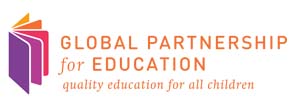
This blog post originally appeared in the Education for All Blog of the Global Partnership for Education; by Nora Fyles, Head of the UNGEI Secretariat
Earlier this year, I read an interview with a secondary school girl about her experiences commuting to school in rural Uganda. Her message has stayed with me, as an example of the “everyday” reality of violence in girls’ lives.
Interviewer: What is the biggest problem or difficulty that you have in your life right now?
Student: The biggest problem--is these men who disturb us--begging for sex when walking to school.
Around the world today, International Women’s Day, attention is focused on the issue of violence against women and girls, the theme of the 57th Commission on the Status of Women. For millions of girls worldwide, violence is more than the “topic of the day,” it is part of their everyday reality. Girls face violence and discrimination due to their sex and age, in many contexts, including on the way to school, in the school yard, and in the classroom.
There is no doubt that gender-based violence is a major and critical barrier threatening the education of girls in many countries of the world, with far reaching consequences: poor performance, irregular attendance, dropout, truancy and low self-esteem not to mention physical harm and pregnancy. In a consultation jointly hosted by UNGEI, UNICEF and the Ethiopia Ministry of Education, participants reported on issues faced by girls. One country representative reported that, “Girls at secondary education levels increasingly face sexual violence including forced marriage, abduction and sexual exploitation, taking advantage of the fact that girls have limited financial and material means.”
Surprisingly, given the impact of violence, school-related gender-based violence is often unremarked upon and taken for granted. Thus, one of the biggest challenges is to recognize that social norms prevent girls from attending school in a safe environment, and to place girls’ education within the broader discourse of women’s rights.
Focus on Girls in GPE’s Strategic Plan
The Global Partnership for Education (GPE) has drawn up a Strategic Plan for 2012-2015 which provides an opening for dialogue and action by focusing on girls’ access to and achievement through school, including schools as safe spaces for girls. The GPE Plan identifies five thematic priorities, including one relating to girls, which states: “All girls in GPE endorsed countries successfully complete primary school and go to secondary school in a safe, supportive learning environment.”
For UNGEI, this is a transformative statement which:
GPE proposes a holistic approach, with a focus on gender responsive education sector plans, strategies to ensure school safety and supportive learning for girls, including female teachers, the collection of evidence and sharing of good practice, and the tracking of enrolment, progress and learning of primary and lower secondary girls.
It is this country-led and holistic approach to ensure that schools are safe and supportive spaces that will allow girls to become advocates for their own rights.
We know that education can serve a protective role for girls and young women by making them aware of and confident to exercise their rights. A recent report by Plan International indicates that women who are educated to secondary level or higher are less likely than their non-educated or primary-educated counterparts to experience violence, and men who are educated to secondary level or higher are less likely than their non-educated or primary-educated counterparts to perpetuate violence.
Education can be empowering, providing space for girls to speak on their own and with their own voices, now and in the future. Preventing and eliminating violence against girls in and around schools is an effective strategy in advancing the status of women in society. UNGEI is pleased to join GPE in celebrating International Women’s Day. Our partnership is ensuring that all girls successfully complete primary school and go to secondary school in a safe, supportive learning environment.
When you subscribe to the blog, we will send you an e-mail when there are new updates on the site so you wouldn't miss them.
Comments